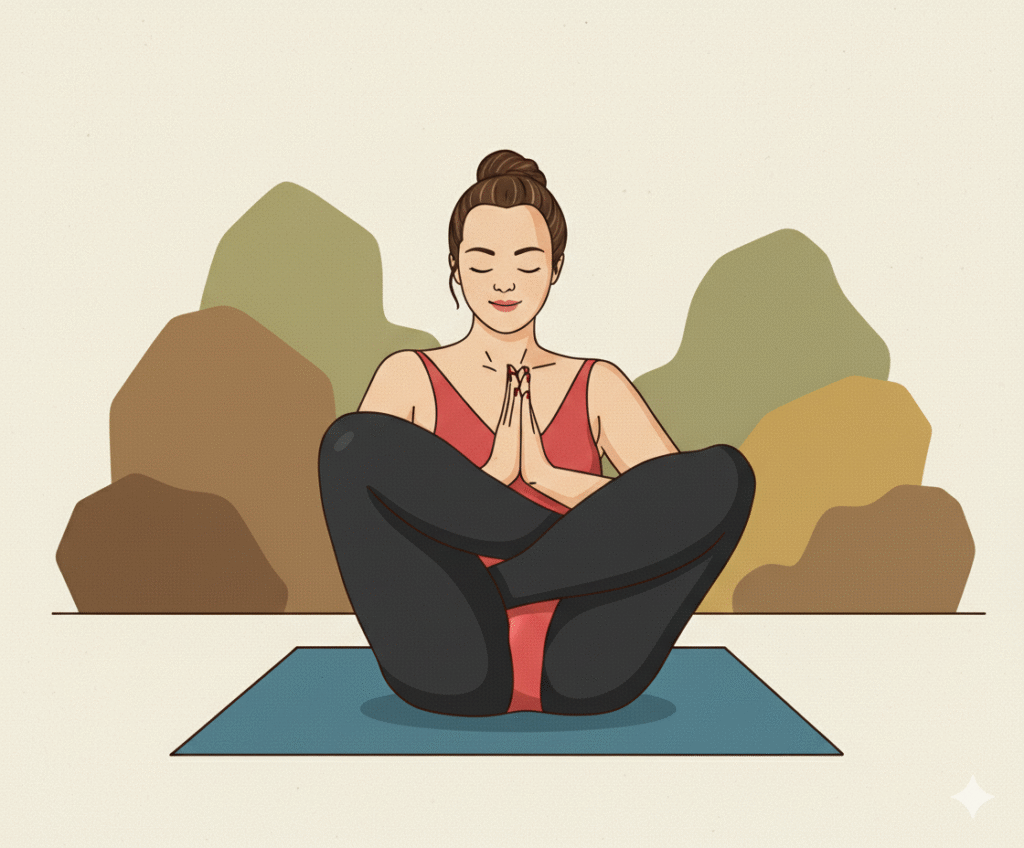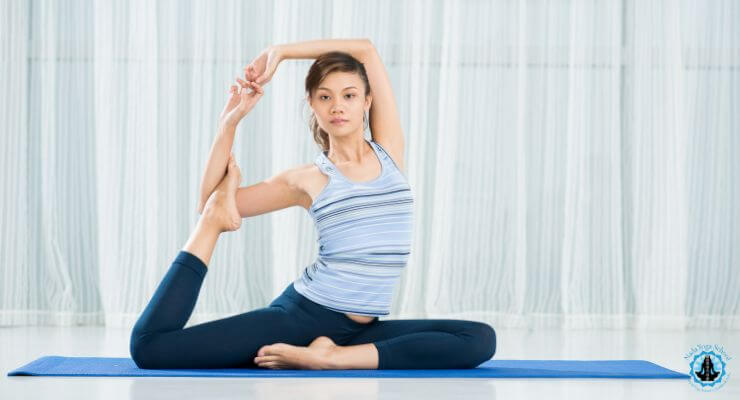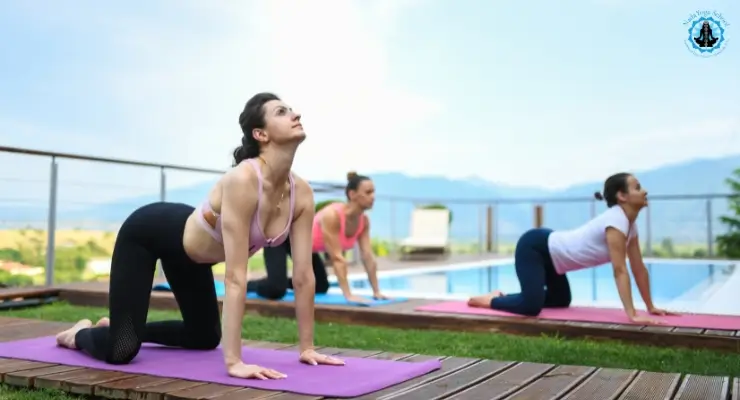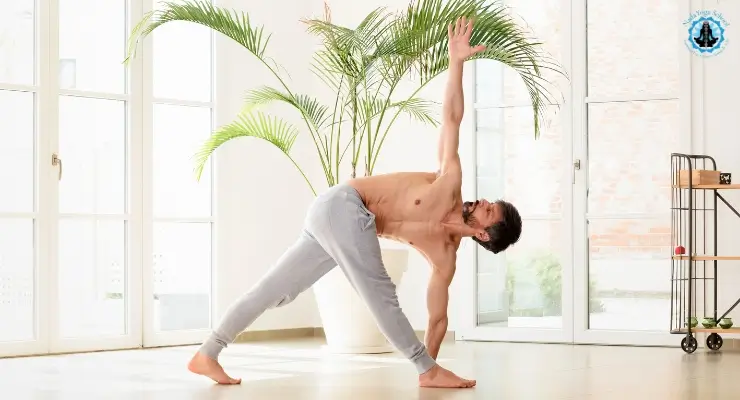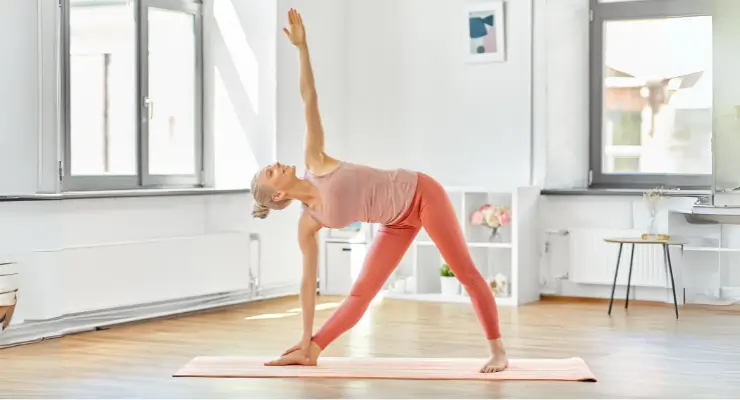Garbhasana (often interchanged with Garbha Pindasana, “embryo in the womb”) is a compact seated balance in Padmasana (Lotus). You thread the forearms through the legs and typically bring the hands to the face or ears, then balance on the tailbone—evoking the rounded shape of a fetus. In many schools (notably Ashtanga Primary Series), the rolling version (Garbha Pindasana) is linked to Kukkutasana (Rooster Pose). Historically, sources note the pose’s limb arrangement matches Uttana Kurmasana (inverted tortoise) except that Garbhasana balances upright.
How to Do It (Step by Step)
A) Static Garbhasana (balance on the seat)
- Set up Lotus: Sit in Padmasana. If Lotus isn’t comfortable, stop here or work with a teacher.
- Thread the arms: Lean back slightly, bring the knees in, then slide each arm between calf and thigh up to the elbow.
- Find the shape: Lift the shins, bend the elbows, and bring the hands to the face/ears (or palms together). Balance on the coccyx with steady, normal breathing.
- Hold & release: Hold briefly (e.g., 30–60 s), then lower, unthread the arms, and return to Padmasana slowly. Switch the Lotus crossing if you repeat.
Tip: To help the forearms glide through, some traditions suggest lightly wetting the forearms (or using a tiny bit of oil/water)—never force the arms.
B) Garbha Pindasana (rolling version in Ashtanga)
From Padmasana with arms threaded and hands up:
- Balance & breathe for ~5 breaths.
- Roll 9 times (traditionally clockwise) with the hands to the forehead/face, keeping a rounded spine and knees hugged in; inhale up, exhale down.
- After the ninth roll, plant the hands and press up to Kukkutasana (optional), hold for 5 breaths, then exit through vinyasa.
Benefits (what practitioners commonly experience)
- Core & spinal conditioning: the compact, rounded balance and (in Ashtanga) controlled rolling strengthen the abdominals and build segmental spinal flexion control.
- Hip mobility awareness: full Lotus requires meaningful hip flexion + external rotation; balancing intensifies proprioception and steadiness.
- Abdominal organ massage & digestive stimulation are traditional claims in several lineages (treated as tradition rather than medical fact).
Anatomy (what’s happening under the hood)
- Hips & knees: The pose demands hip external rotation and flexion (Lotus). If the hips aren’t ready, force transfers to the knees—the main risk. Work the lotus depth gradually before threading arms.
- Spine & core: To balance (and to roll), you need spinal flexion—think “round like a ball.” If the knees drift away, the back flattens, and rolling stalls.
- Shoulder/arm position: Arms thread between thigh and calf, elbows flexed; there’s minimal load compared to arm balances, but you’ll use forearm/wrist mobility and gentle scapular control. In the transition to Kukkutasana, pushing strength and scapular stability (serratus, lower traps) matter.
Preparatory Poses & Progressions
Open the hips for Lotus (safely):
- Baddha Konasana, Janu Sirsasana, Marichyasana variations; Standing Half-Bound Lotus (Ardha Baddha Padmottanasana) as an Ashtanga-style primer.
Pattern the shape and the roll:
- Happy Baby / Apanasana and Cat to feel rounding; Navasana (Boat) for compressive core; practice small rock-backs maintaining a rounded spine before trying full circular rolls.
Pose-specific drills:
- Practice threading the arms without Lotus at first (wrap arms around crossed shins), then add Lotus when truly comfortable. Lightly moisten forearms if friction stops you; never jam the knees.
Contraindications & Cautions
- Hip, knee, or ankle problems: Skip or modify. This pose heavily loads the Lotus configuration; many schools explicitly caution against it with lower-limb joint issues.
- Pregnancy; high blood pressure; recent abdominal surgery; significant spinal issues: Commonly listed as contraindications for the rolling version and/or the Kukkutasana transition. Seek individualized guidance.
- Sciatica or acute back pain: Avoid the rolling variant; even the static version may aggravate symptoms.
Red flags: sharp knee/ankle pain in Lotus, numbness/tingling, or low-back pain when rolling—stop immediately and regress. (A small, steady static balance is a perfectly valid endpoint.)
Smart Alignment & Coaching Cues
- “Round to roll.”: Keep the knees hugged in and spine rounded; if you flatten, you’ll “hit the brakes.”
- Thread, don’t force: Aim the forearms diagonally as you slide through; if needed, use a little water on the skin and move slowly.
- Respect Lotus: If Padmasana isn’t truly comfortable, build hip rotation first; substitute a modified balance (crossed shins, hands clasped) and skip the rolls until ready.
Variations & Context
- Static Garbhasana (hands to face/ears) held for short durations—great for balance work without rolling.
- Ashtanga Garbha Pindasana: balance → nine rolls → optional press to Kukkutasana, then vinyasa.
- The limb arrangement echoes Uttana Kurmasana (same “bundle,” different orientation).

